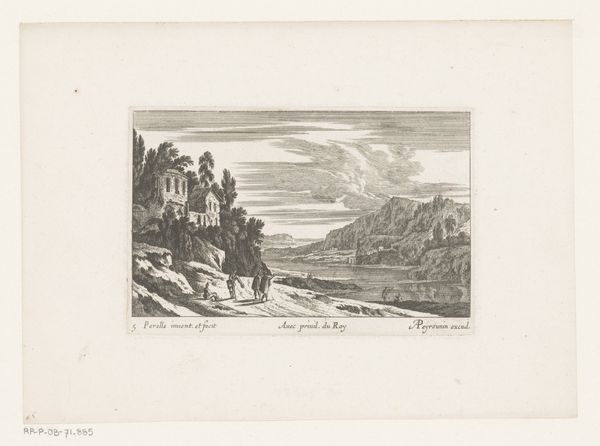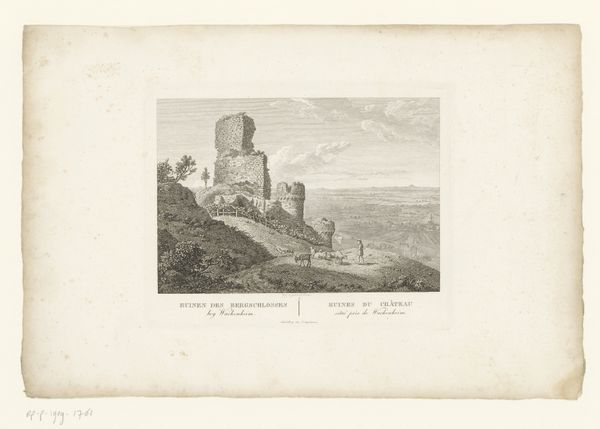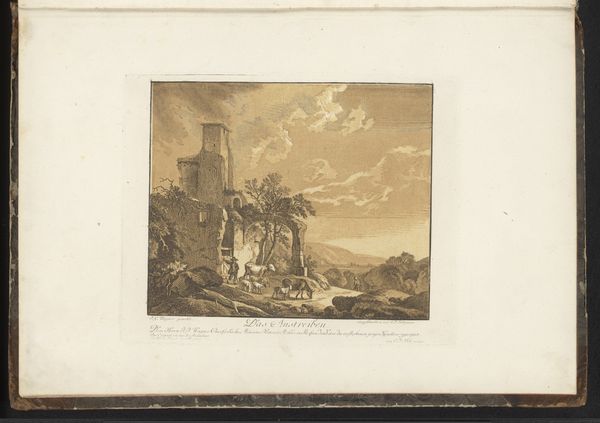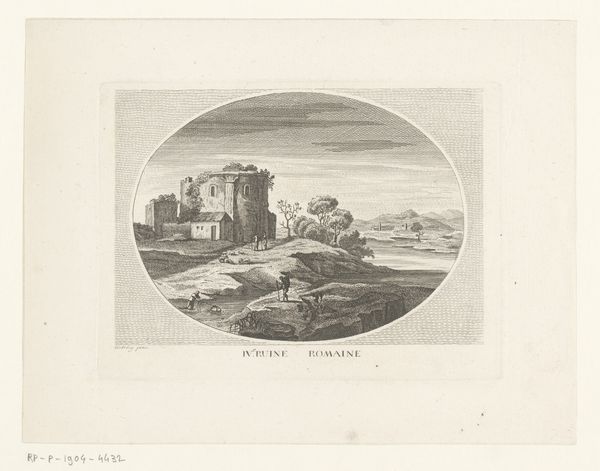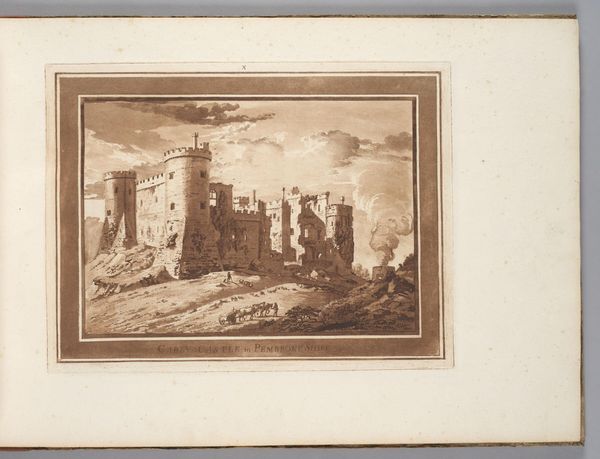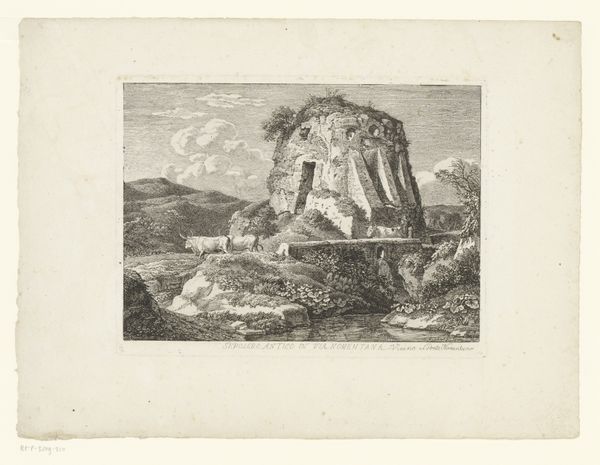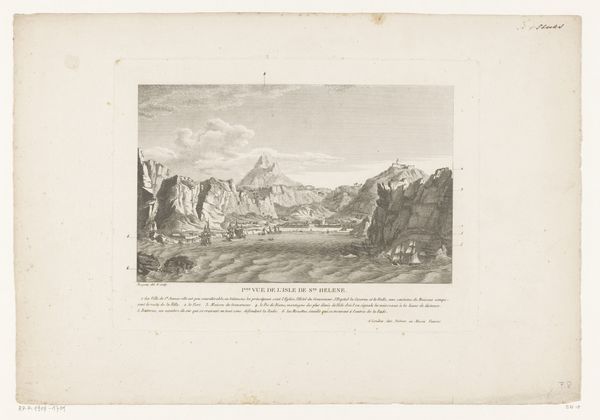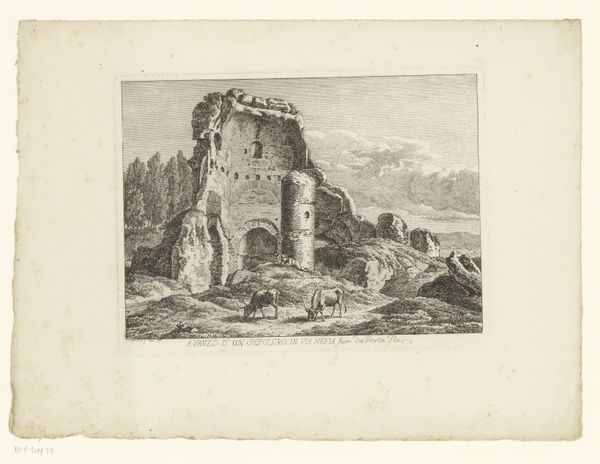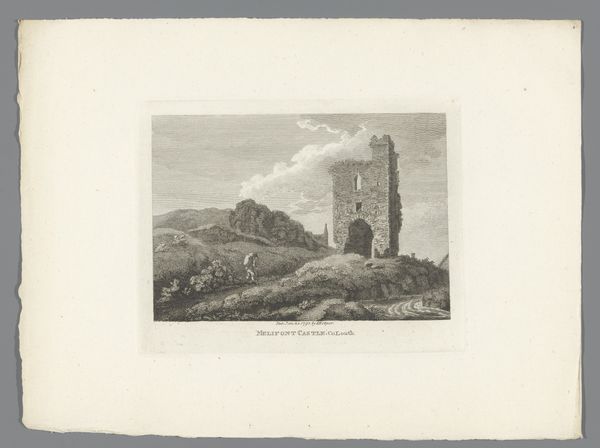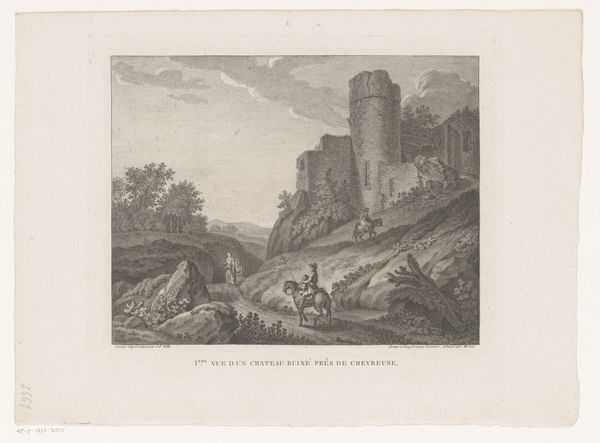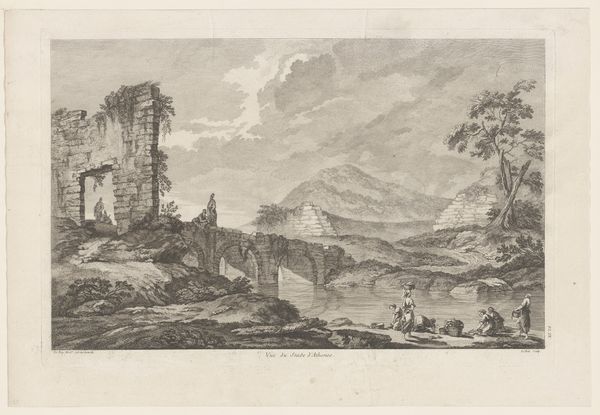
print, etching
#
medieval
# print
#
etching
#
landscape
#
romanticism
Dimensions: height 190 mm, width 275 mm
Copyright: Rijks Museum: Open Domain
Editor: Here we have Friedrich Geissler's "Gezicht op Sonnenberg," created sometime between 1810 and 1845. It’s an etching, so a print, depicting a ruined castle. I find the scene quite melancholic. What elements stand out to you? Curator: I see a keen focus on the ruin, meticulously rendered in the etching process. Note the labor invested in creating this image, the detailed hatching that builds up the textures of the stone and earth. It prompts the question: who was this print intended for, and how might its consumption reflect social hierarchies of the time? Editor: That's a good point. Prints were more accessible, weren’t they? Unlike unique paintings. How does the choice of materials and technique influence our understanding of Romanticism here? Curator: The etching medium, inherently reproducible, democratizes the experience of viewing the ruin. Romanticism's fascination with ruins is often tied to notions of a glorious past, lost or decayed. The very process of etching, acid biting into the metal plate, mirrors the slow decay witnessed in the landscape. The physical effort needed to make these images links artistic production to wider material culture. What does that imply about art versus craft? Editor: So the material and the labor become part of the meaning, not just a means to an end. Are you suggesting Geissler is also commenting on the role of craftsmanship and production in portraying these historical narratives? Curator: Precisely! Consider who benefits from this image. The landscape is now commodified and is accessed and viewed more frequently via print form. The focus shifts to production processes which might be deemed critical of traditional hierarchies of artistic value. This reframes our idea of the artistic 'genius'. Editor: It's fascinating to think about the socio-economic implications of something seemingly so focused on the past. This helps me realize how materiality gives artworks their cultural value and contextual purpose. Curator: Indeed. The material process is inseparable from the message. I will certainly rethink what the romantic represents for me after having this new found awareness.
Comments
No comments
Be the first to comment and join the conversation on the ultimate creative platform.

